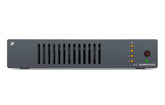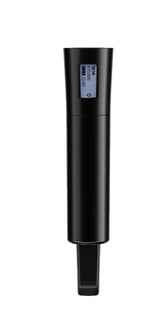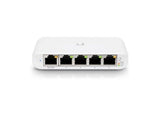How to Choose the Right Security Cameras for Your Business
Introduction: Choosing the Right Surveillance Can Make or Break Your Security
Did you know that 60% of burglars avoid businesses with visible security cameras? In 2025, surveillance isn't just a precaution—it's a strategic business asset. Whether you run a retail store, office, warehouse, or restaurant, having the right security camera system can protect assets, prevent losses, and improve operational visibility.
Yet, with hundreds of options on the market—ranging from 4K IP cameras to motion-detecting domes—selecting the best security camera for your business can be overwhelming. Resolution, storage type, remote access, placement, and budget all play a part.
In this guide, we’ll walk through how to choose the right security cameras for your business, highlight real-world benefits, address common challenges, and offer practical steps for implementation.
Whether you're starting from scratch or upgrading an outdated system, this post gives you the insight to make an informed investment in your business security.
What Does It Mean to Choose the Right Business Security Camera?
Choosing the right security camera for your business means selecting a surveillance solution that meets your unique operational needs, budget, and layout. It’s not about buying the most expensive model—it’s about matching the right camera type, features, and placement strategy to your specific risk areas.
Key considerations include:
-
Location: Indoor vs. outdoor, entrances, blind spots
-
Camera type: Dome, bullet, PTZ (pan-tilt-zoom), turret, or fisheye
-
Connectivity: IP vs. analog
-
Resolution: 1080p, 4MP, 4K—depending on your visual requirements
-
Storage method: Cloud, NVR, or DVR
-
Integrations: Alarm systems, access control, remote monitoring apps
With the right setup, your security system becomes more than a deterrent—it becomes a management and analytics tool.
Benefits and Use Cases for Business Security Cameras
1. Theft Prevention and Liability Protection
The presence of high-resolution cameras helps deter theft, employee misconduct, and vandalism. Video evidence can also protect your business during disputes, insurance claims, or legal investigations.
Use Case: A retail store reduces shrinkage by installing visible dome cameras near cash registers and high-theft zones.
2. Real-Time Monitoring and Remote Access
Modern security cameras offer mobile app access, letting you view live or recorded footage from anywhere. Ideal for multi-location businesses or owners who travel frequently.
Use Case: A restaurant owner checks live camera feeds across three locations via a smartphone app—monitoring staffing and customer activity in real-time.
3. Workplace Safety and Operational Oversight
Surveillance systems also help enforce safety policies and monitor workflow in warehouses, kitchens, and production lines.
Use Case: A warehouse uses AI-powered cameras to detect when employees enter restricted zones or fail to wear safety gear.
4. Integration with Smart Business Systems
Business surveillance systems can now integrate with access control, alarms, and IoT devices, creating an interconnected security ecosystem.
Browse commercial-grade surveillance cameras at SportsGeekUSA to find models with motion detection, IR night vision, and cloud compatibility.
Challenges and Considerations
Choosing a surveillance system involves more than plugging in a few cameras. Here are some challenges and how to work through them.
1. Overlooking Coverage Gaps
Many businesses install cameras only at entrances, forgetting critical areas like loading docks, blind corners, or storage closets.
Solution: Conduct a full site survey before selecting your cameras. Map risk zones and use camera types appropriate to each location.
2. Underestimating Storage Needs
High-resolution footage consumes bandwidth and storage fast. Failing to plan for it can lead to overwritten data or gaps in your recording history.
Solution: Choose an NVR with sufficient storage (or opt for cloud-based storage) and configure motion-based recording to save space.
3. Poor Lighting or Night Visibility
Standard cameras may deliver poor images in low light or darkness, limiting their effectiveness.
Solution: Select models with infrared night vision, wide dynamic range (WDR), or low-light sensors for 24/7 clarity.
4. Compatibility with Existing Infrastructure
If you’re upgrading a legacy system, you may run into compatibility issues with your wiring or monitoring software.
Solution: Choose ONVIF-compliant IP cameras or work with hybrid DVRs that can support both analog and IP inputs.
5. Bandwidth Constraints
IP cameras can tax your network—especially with 4K video feeds across multiple locations.
Solution: Upgrade to a business-grade router and use networking solutions with QoS and PoE support for efficiency.
How to Choose the Right Security Cameras for Your Business
Here’s a step-by-step framework for evaluating and selecting your business’s surveillance system:
Step 1: Define Your Surveillance Goals
Are you trying to prevent theft, monitor employees, meet compliance, or improve safety? Your goals dictate the features you need.
Step 2: Evaluate Your Environment
-
Indoors: Go for compact dome or turret cameras with wide-angle lenses.
-
Outdoors: Choose weatherproof bullet cameras with high IP ratings and built-in heaters if in cold climates.
-
Remote areas: Opt for PTZ cameras that offer zoom and 360° coverage.
Step 3: Choose the Right Camera Features
Key features to evaluate:
-
Resolution: 1080p is sufficient for most, but 4MP+ is ideal for facial recognition or large areas.
-
Field of View: Wider angles reduce the number of cameras needed.
-
Audio recording: Useful for access points or public-facing interactions.
-
IR/Night Vision: Critical for 24/7 monitoring.
-
Motion detection & alerts: Enables smarter storage and proactive response.
Step 4: Decide on Storage Type
-
NVR (Network Video Recorder): Best for IP systems; scalable and flexible.
-
DVR (Digital Video Recorder): Best for analog setups.
-
Cloud Storage: Offers easy access and offsite redundancy, though subscription costs apply.
Tip: Many businesses use hybrid systems—local NVR with cloud backup.
Step 5: Consider Scalability
As your business grows, your camera system should scale with it. Choose systems that allow easy addition of new cameras, sensors, and access points.
Step 6: Ensure Remote Access & Alerts
Look for cameras with:
-
Mobile app support
-
Push notifications for events
-
Browser-based management dashboards
FAQs
How many security cameras do I need for my business?
It depends on the size and layout. A small office may need 4–6 cameras, while a warehouse may require 15–30 to cover all critical areas.
Can I install security cameras myself?
DIY is possible with plug-and-play IP systems, but professional installation is recommended for multi-camera setups or if integration with alarms/access control is needed.
Is it legal to record video and audio in my business?
Video recording in public areas is generally legal, but audio recording laws vary by state. Always inform employees and visitors when cameras are in use.
Conclusion: Build Security That Works for Your Business
Choosing the right security cameras isn’t about buying the most expensive gear—it’s about finding a system tailored to your layout, risks, and goals. From protecting inventory and monitoring workflows to deterring crime and ensuring compliance, a reliable surveillance system provides peace of mind and business intelligence.
The key is to define your priorities, match them to the right technologies, and plan for scalability and security.
Ready to protect your business with the right surveillance system?
Explore our full range of commercial security cameras, AV solutions, and networking gear at SportsGeekUSA.











